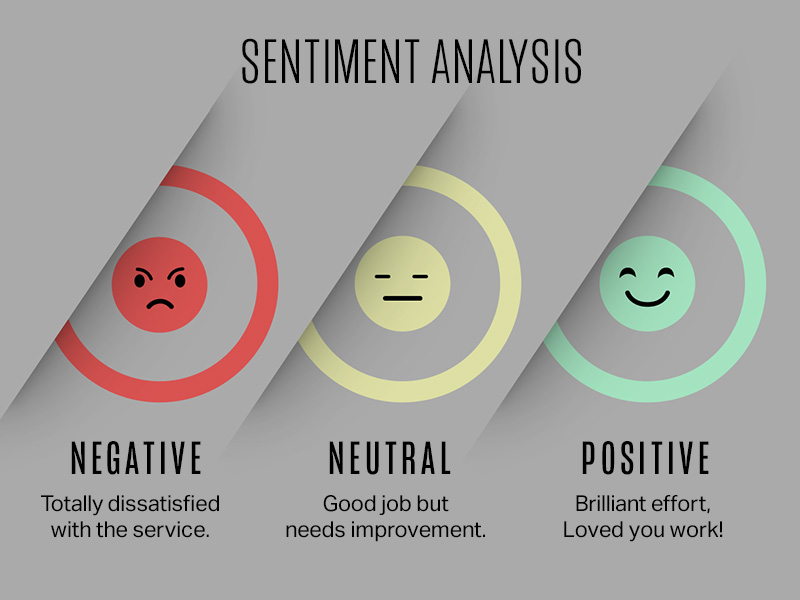In the era of big data, understanding the sentiments behind vast amounts of information has become crucial for businesses aiming to thrive in a competitive landscape. From deciphering customer feedback to monitoring social media trends, sentiment analysis techniques have evolved to become indispensable tools in the hands of modern analysts.
Definition of Sentiment Analysis Techniques

Sentiment analysis, also known as opinion mining, involves the use of natural language processing and machine learning to identify and analyze opinions, emotions, and attitudes expressed in text data.
A. Importance in Modern Business
In the contemporary business environment, customer opinions shape purchasing decisions. Sentiment analysis allows companies to gain valuable insights into public perception, enabling them to adapt their strategies accordingly.
B. Evolution of Sentiment Analysis Techniques
From traditional rule-based approaches to cutting-edge deep learning models, the techniques employed in sentiment analysis have undergone a significant transformation.
Basic Sentiment Analysis Methods
A. Rule-Based Approaches
Rule-based methods involve defining a set of predefined rules to determine sentiment. While simple, they may lack the adaptability seen in more advanced techniques.
B. Machine Learning Algorithms
Utilizing algorithms, machine learning models are trained on labeled datasets to recognize patterns in language and assign sentiment scores.
C. Lexicon-Based Analysis
The lexicon-based analysis relies on predefined sentiment dictionaries, assigning scores to words to determine overall sentiment.
Advanced Sentiment Analysis Techniques
A. Deep Learning Models
Deep learning, particularly neural networks, has revolutionized sentiment analysis by allowing models to learn intricate patterns and nuances in language.
B. Natural Language Processing Enhancements
Advancements in natural language processing have facilitated a deeper understanding of context, improving the accuracy of sentiment analysis.
C. Aspect-Based Sentiment Analysis
Going beyond overall sentiment, this technique focuses on extracting sentiment from specific aspects or features mentioned in the text.
Challenges
A. Handling Sarcasm and Irony
Deciphering sarcastic or ironic statements poses a challenge, as the literal meaning may differ from the intended sentiment.
B. Dealing with Contextual Ambiguity
Language is inherently nuanced, and context plays a crucial role. Sentiment analysis must grapple with ambiguous expressions.
C. Multilingual Sentiment Analysis
In a globalized world, analyzing sentiments across different languages adds complexity, requiring models to be multilingual.
Applications of Sentiment Analysis
A. Social Media Monitoring
Brands monitor social media sentiment to gauge public perception, identify trends, and respond promptly to emerging issues.
B. Customer Feedback Analysis
Understanding customer sentiments aids in improving products and services, leading to enhanced customer satisfaction.
C. Brand Reputation Management
Proactively managing online reputation by monitoring sentiments helps in maintaining a positive brand image.
Future Trends
A. Integration with Artificial Intelligence
The integration of sentiment analysis with broader artificial intelligence systems will enhance decision-making processes.
B. Improved Emotion Detection
Future developments may focus on identifying specific emotions, providing more nuanced insights.
C. Cross-Domain Sentiment Analysis
Advancements will enable sentiment analysis to be seamlessly applied across diverse industries and domains.
Tips for Effective Sentiment Analysis
A. Data Quality and Quantity
The accuracy of sentiment analysis depends on the quality and quantity of the data used for training and testing.
B. Continuous Model Training
To stay relevant, sentiment analysis models should be regularly updated and trained on new data.
C. Considering Cultural Nuances
Understanding cultural nuances is vital, as expressions and sentiments can vary significantly across different regions.
Ethical Considerations
A. Privacy Concerns
The collection and analysis of personal sentiments raise privacy concerns that must be addressed responsibly.
B. Bias and Fairness
Guarding against biases in sentiment analysis models is crucial to ensure fair and accurate results.
C. Transparency in Model Deployment
Businesses should be transparent about how sentiment analysis models are deployed and their impact on individuals.
Conclusion
Sentiment analysis has evolved from basic methods to sophisticated techniques, playing a pivotal role in understanding and leveraging public sentiments.
As businesses continue to navigate the complex landscape of consumer opinions, sentiment analysis remains a dynamic and essential tool for informed decision-making.
Unlock the power of sentiment analysis for your business. Contact AIM Technologies for a personalized demonstration of our cutting-edge solutions.
FAQs
A. How accurate are sentiment analysis techniques?
- Sentiment analysis techniques vary in accuracy, with advanced models achieving higher precision, especially when well-trained.
B. Can sentiment analysis be applied to non-textual data?
- While sentiment analysis primarily focuses on text, advancements allow for the analysis of audio and visual data, expanding its applicability.
C. What challenges do businesses face when implementing sentiment analysis?
- Challenges include handling contextual nuances, ensuring data privacy, and addressing potential biases in the analysis.
D. Are there open-source tools available for sentiment analysis?
- Yes, various open-source tools like NLTK and TextBlob facilitate sentiment analysis for developers and businesses.
E. How can companies use sentiment analysis to enhance customer satisfaction?
- By analyzing customer feedback, companies can identify pain points, improve products/services, and proactively address concerns, ultimately enhancing customer satisfaction.




